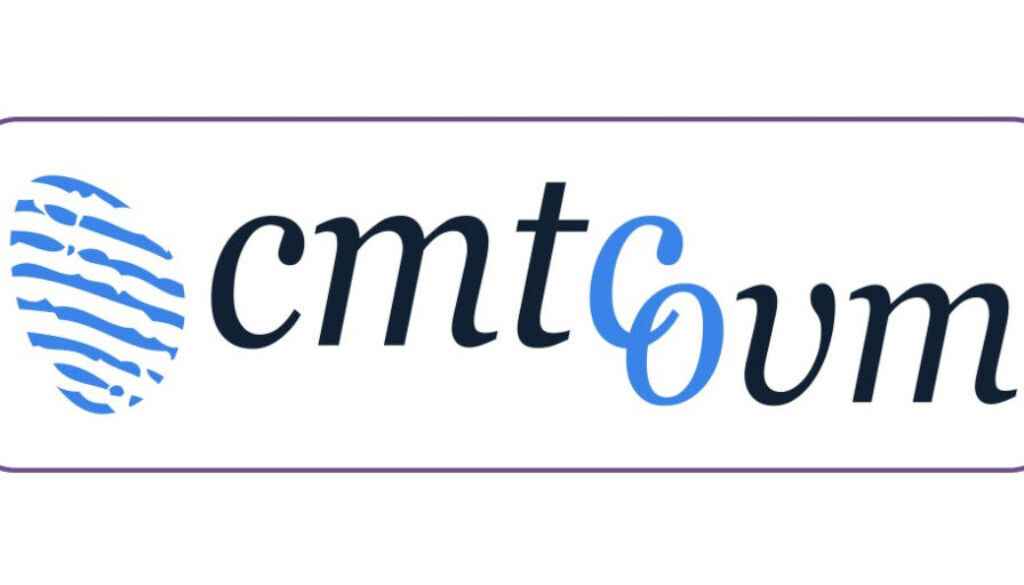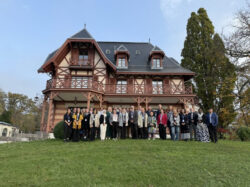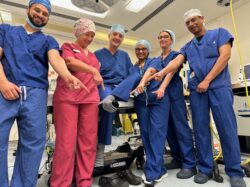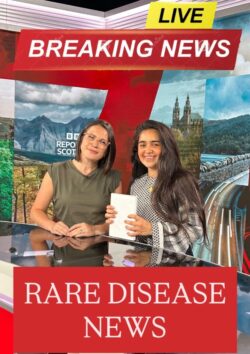CMTC – More Than Just a Bruise
by Nadine Jefferies
The moments after a baby is born – already a rollercoaster of emotions for any parent –
are only amplified if your baby has a rare condition. Lex van der Heijden, father of a young lady
with CMTC, knows this first-hand. I spoke to him about the shock he faced when his daughter
was born with what appeared to be bruised skin, and what this meant for him and his family.
Lex is the President of the worldwide non-profit organisation CMTC-OVM, which aims to
improve the lives of those suffering from blood vessel abnormalities, their families, and to
stimulate scientific research.

To give a quick crash course in CMTC (Cutis Marmorata Telangiectatica Congenita, also
known as van Lohuizen), it’s a condition that affects the blood vessels in the skin, giving a
marbled appearance. Usually CMTC is a fairly mild condition, but there can be complications
such as developing asymmetrical limbs or glaucoma. How rare is it? Very. For a disease to be
classed as rare, it has to affect less than 1 in 2,000 people, but less than 300 cases of CMTC
have been reported in medical literature.
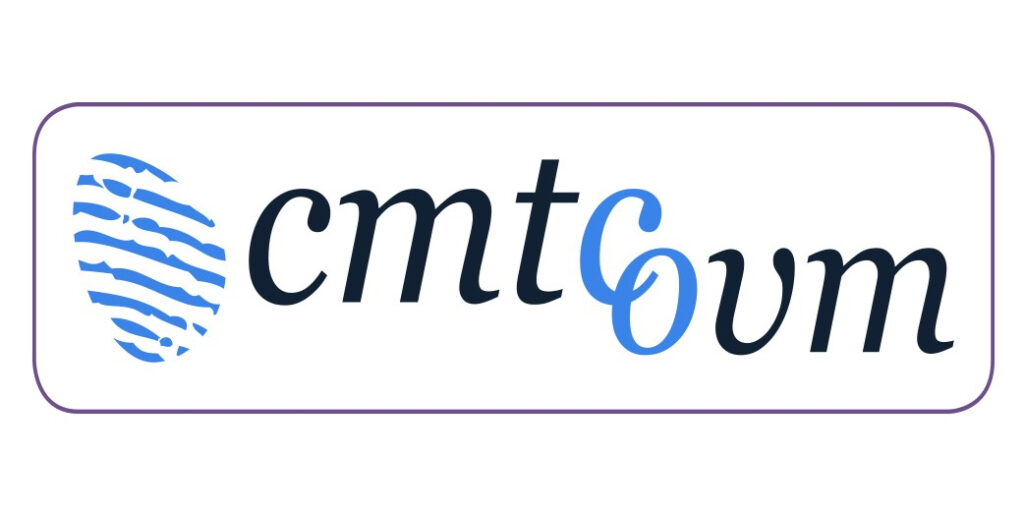
It is never one-dimensional Lex rightly points out that it is much more complex than saying “I have a rare disease.” Until recently the emphasis has only been placed on the medical side, but “people are more
than just a body”. Having a rare condition also impacts other areas such as your self-esteem,learning achievements, sports, social belonging and familial and romantic relationships.
Therefore just as living with a rare disease is multi-dimensional, the CMTC-OVM organisation believes that patient care should involve more than just a doctor. “This” Lex explains, “is what we call the Clover Leaf Model”. It means the patient, healthcare provider, family and patient organisation are all equally involved in patient care.
Lex’s daughter’s story When she was born black and blue, hospital staff assumed Lex’s daughter had cosmetic issues that would pass, but it was only when her legs began to develop differently that Lex knew it was more than this. At 6 months old Lex’s daughter was diagnosed with CMTC, and this
family’s lives were changed completely. Lex’s life mission had found him, he said, and that mission is advocating for rare disease patients.
Lex’s daughter faced difficulties growing up. Due to her condition, she has trouble walking long distances, and was teased at school. On top of this, it impacted her self-esteem at a time when most young girls are already self conscious. For example, she wanted to cover her legs when swimming as the cold exacerbated the blue colouring of her skin.
To this day she does not want to talk about her condition, showing just how crucial it is to give the right information and support to those born with a rare disease.
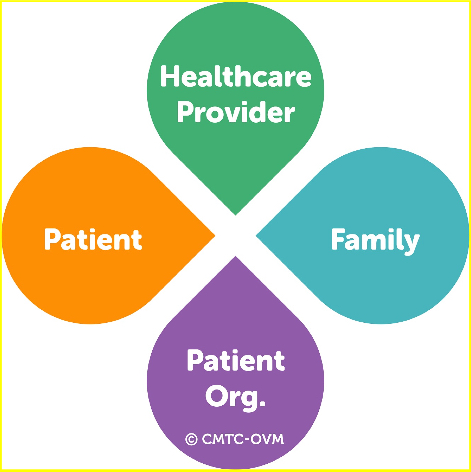
Negative experiences with doctors
When I asked Lex about an example of a negative experience with a doctor, I was appalled to learn that when he brought his daughter into the hospital aged 12 due to sudden fainting, the first thing they asked him was “do you abuse your child?” because she appeared bruised.
His daughter now suffers from “White Coat Syndrome”, freezing when she sees medical professionals in white coats from the amount of poor hospital experiences she has faced. Unfortunately this is commonplace, and one of the reasons why Lex wants to drive awareness in the hopes that it can prevent this kind of treatment.
Advice for doctors and medical students
So what advice does Lex have for doctors and medical students? “One word”, he said, “listen!”. Many patients are not heard so it is vital to ask and really listen.
Lex also highlighted the need for awareness. While doctors have trained for years, the patient lives with the condition 24/7, making them the expert. Lastly, Lex spoke about sustainability. CMTC is a chronic disease, requiring a long-term solution, not a quick fix.
Find out more about CMTC-OVM
I hope you have learnt as much as I have speaking to Lex! Despite slow changes there is still much progress to be made to improve the lives of those living with rare diseases.
For an abundance of resources (that are not all disease specific), you can find the
CMTC-OVM website here: www.cmtc.nl

